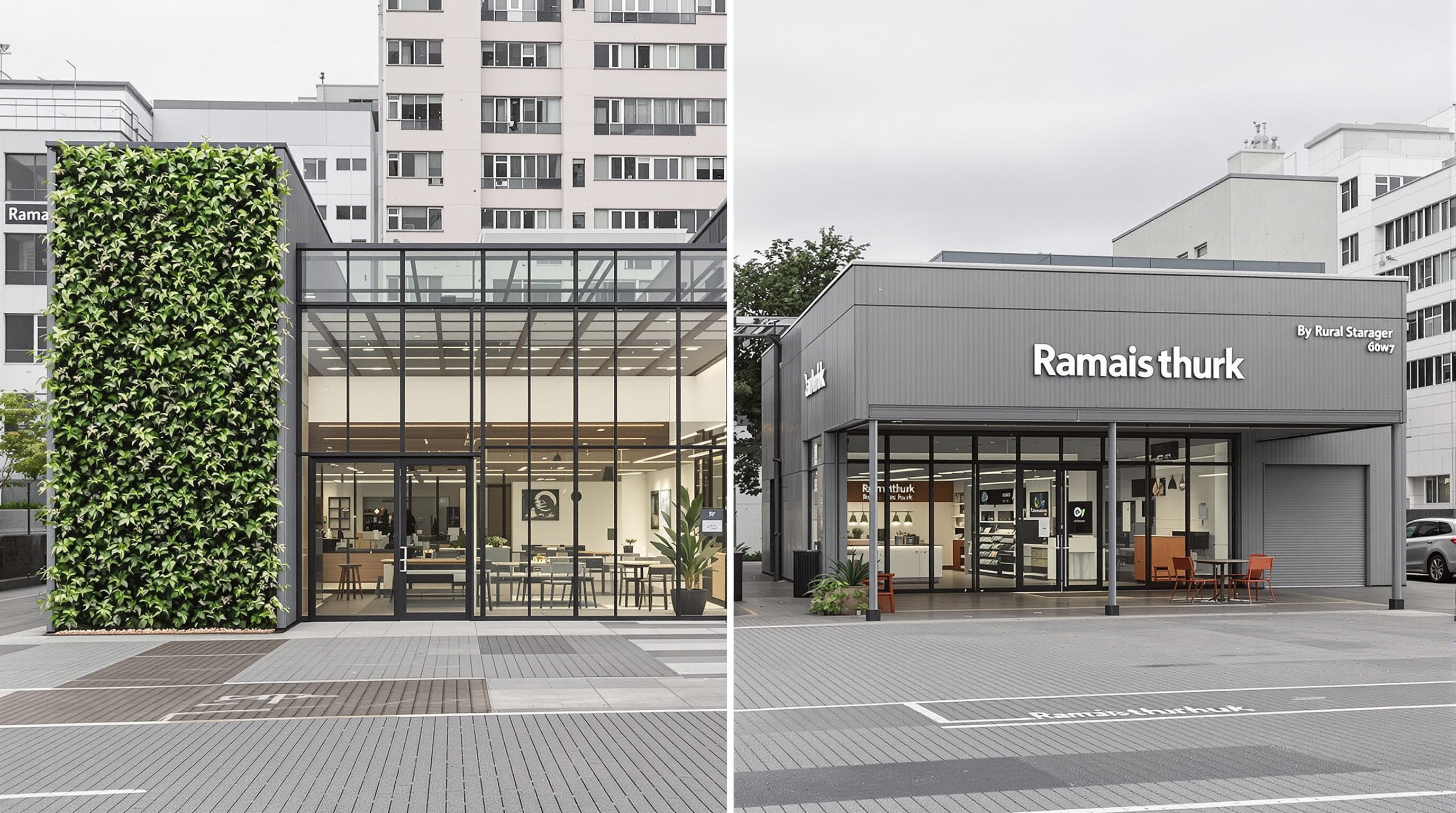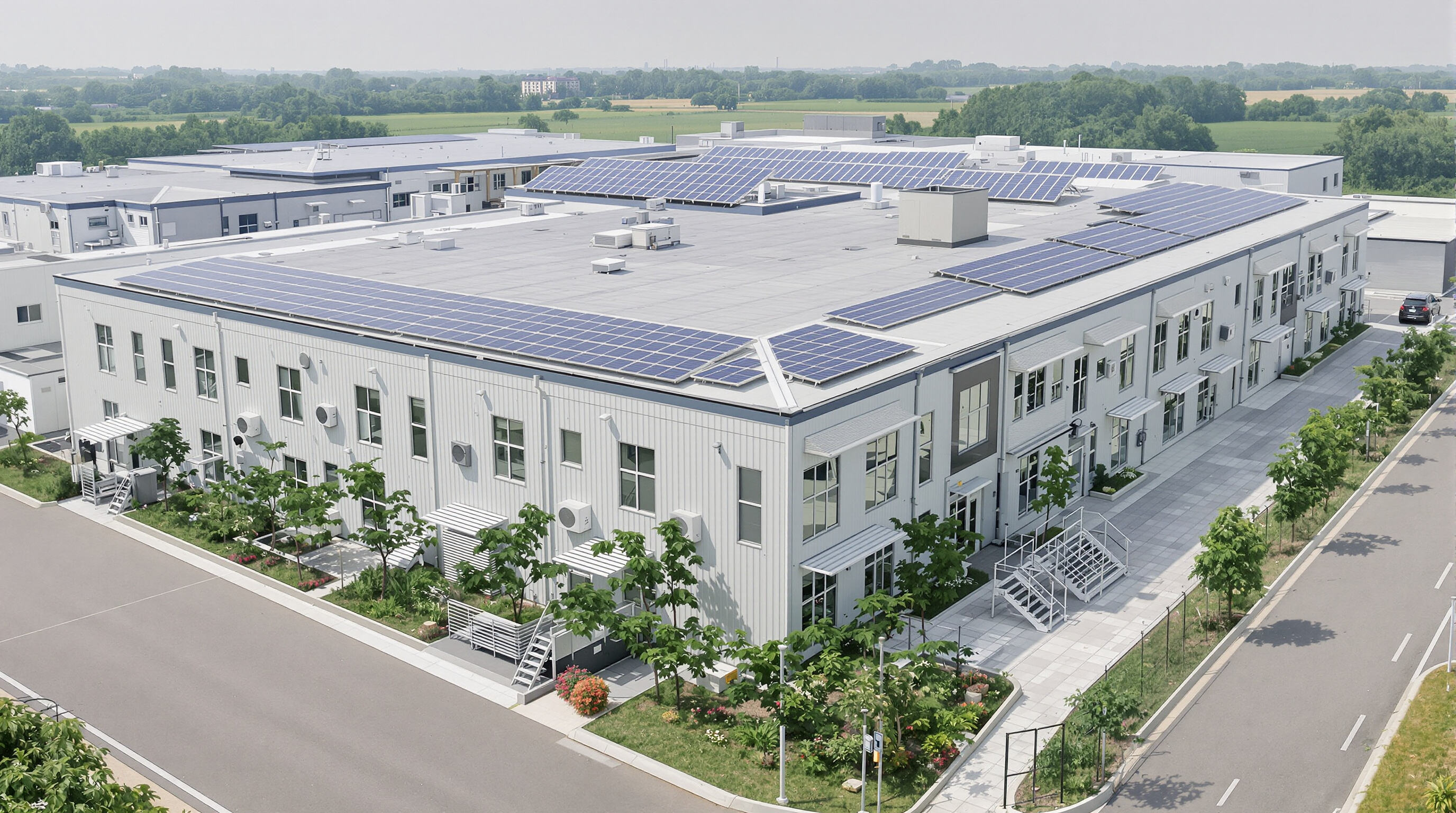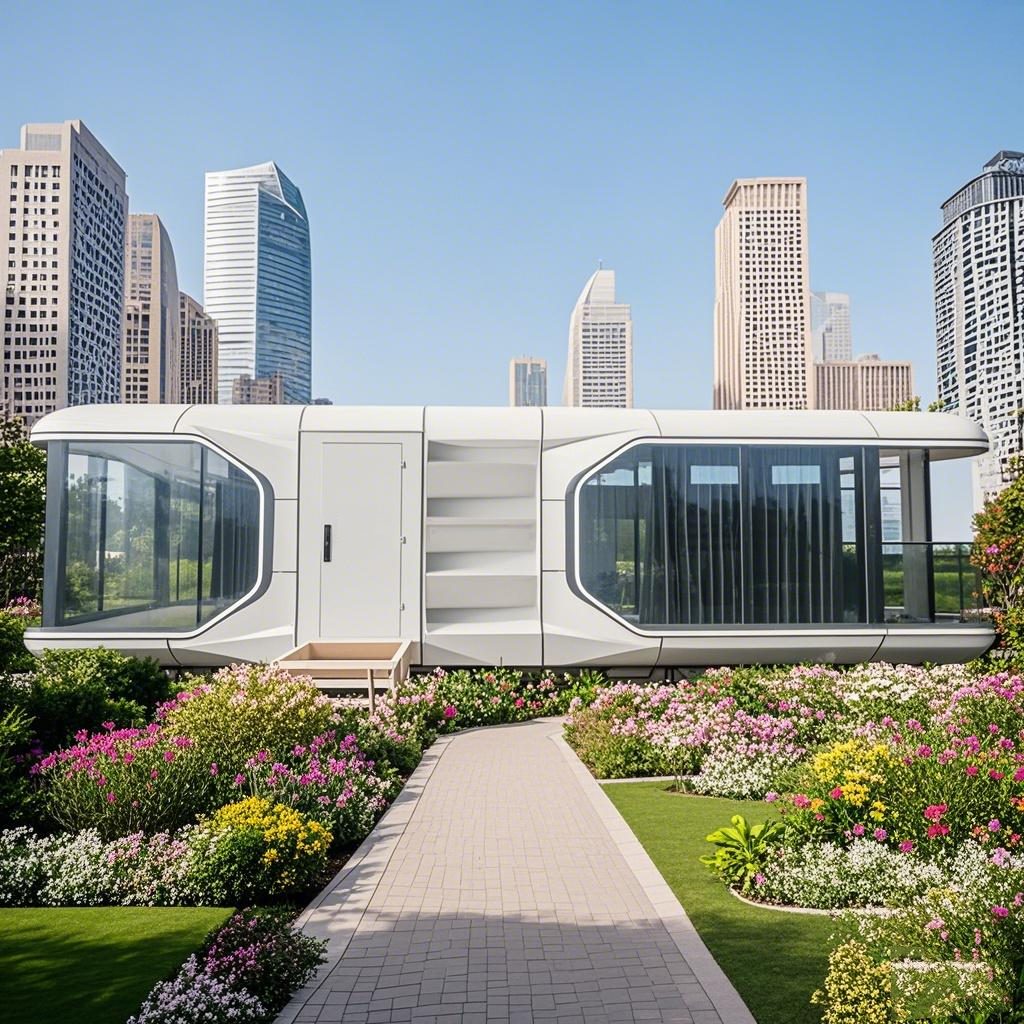The Growing Role of Prefabricated Houses in Commercial Real Estate
Rising Demand for Rapid Commercial Construction
Speed matters a lot in commercial real estate these days, which explains why prefabricated buildings have become so popular among developers. Traditional building projects often take anywhere from 12 to 18 months just to finish retail spaces, but modular construction can get those same commercial properties ready in about half that time according to Modular Building Institute data from last year. The pressure to build quickly has only gotten worse as land prices keep climbing. Urban areas saw commercial rents jump by around 22 percent since 2020 per JLL reports. All this means businesses want structures they can start making money from sooner rather than waiting for conventional buildings to be completed.
How Prefabricated Houses Support Scalable Business Expansion
The prefab construction approach lets businesses copy their store designs from one location to another, yet still make adjustments for local requirements. According to a recent CBRE report from 2024, franchises that went with modular construction managed to open about twice as many stores each year compared to those stuck with traditional building methods. And it's not just for permanent structures either. Retailers are increasingly turning to temporary pop-up style prefabs to try out new areas without breaking the bank. These temporary setups require roughly 80 percent less money upfront than going all in on a full blown permanent location. Makes sense when looking at the risks involved in expanding into unfamiliar territory.
Case Study: Modular Hotels Built in 60% Less Time
Along the coast, a hotel group put up 100 prefabricated rooms last year to handle the summer rush, finishing the first stage in just 90 days compared to what would have taken around 240 days with regular building methods. According to the Hospitality Sector Report from 2023, they saved about 34% on costs mainly because they used pre-made bathroom sections and standard room components made in factories. Pretty impressive really. Within three months after opening, people were checking in at roughly the same rate as other hotels that had been built the traditional way.
Adoption by Global Retail and Franchise Chains
Over 40% of new retail spaces under 10,000 sq.ft. now use prefabricated houses, particularly in food service and apparel (Retail Construction Analysis, 2024). Brands leverage modular designs to maintain architectural consistency across regions while meeting local zoning codes—a critical advantage for chains expanding into 3+ countries annually.
Design Flexibility and Brand-Driven Customization of Prefabricated Commercial Buildings

Debunking the One-Size-Fits-All Myth in Prefabricated Houses
Modern prefabricated commercial buildings defy outdated assumptions about uniformity, offering floor plan flexibility that accommodates retail stores (800–4,000 sq ft), office suites, and healthcare facilities. Advanced manufacturing enables custom floor-to-ceiling heights (12–30 ft), façade material swaps between metal, glass, or composite panels, and interior partition reconfiguration within 72 hours of delivery.
Adaptable Architectural Frameworks for Diverse Commercial Uses
The same modular system can deploy as compact urban retail units with foldable storefront systems, suburban medical clinics featuring ADA-compliant exam rooms, or light industrial workshops with 20% taller ceiling bays than traditional construction.
Case Study: Custom Prefabricated Cafés Across Urban and Rural Markets
A national coffee chain deployed 127 prefabricated cafés in 2023 using a standardized 600 sq ft core module. Urban locations incorporated vertical green walls and micro-roasting stations, while rural units added drive-thru extensions and 35% larger storage capacity—all while maintaining 90% brand design consistency.
AI-Driven Design Tools for Faster, Brand-Consistent Prefabricated Houses
Platforms leveraging generative design algorithms now reduce custom commercial project planning from 14 weeks to 8 days. These systems analyze brand color palettes, spatial requirements, and local zoning codes to generate compliant prototypes that maintain visual identity across 23+ regional markets simultaneously.
Cost Efficiency and Return on Investment of Commercial Prefabricated Houses
Escalating Construction Costs Driving Shift to Prefabricated Houses
The construction industry has seen a pretty dramatic jump in costs for commercial developers over the past few years. According to the U.S. Bureau of Labor Statistics from 2024, traditional building expenses have gone up around 34% since 2021, which explains why we're seeing about 19% more prefabricated commercial projects each year. Prefab housing actually helps avoid those wild swings in material prices because everything comes from factories where they control what gets bought when. Plus, these standard parts cut down on those expensive redesign fees architects usually charge, sometimes saving between 20 to even 40 percent. Looking at the bigger picture, recent studies show that modular office buildings can match regular construction costs once they hit around 10,000 square feet or more. This happens mainly because companies get better deals buying materials in bulk and benefit from streamlined production processes similar to car manufacturing lines.
Reduced Labor and Material Waste in Off-Site Construction
Factory production slashes labor hours by 45% compared to on-site builds (Modular Building Institute 2024), with CNC machinery achieving 98% material utilization versus 77% in traditional framing. This precision reduces disposal costs by $7.50/sq ft and accelerates project timelines—critical for franchise chains requiring simultaneous nationwide launches.
Case Study: Medical Clinic Chain Achieves 35% Cost Savings
A 22-location urgent care provider cut construction expenses by $4.2 million using prefabricated modular clinics. Factory-built exam rooms and HVAC modules reduced on-site labor by 61%, while standardized electrical layouts eliminated $148,000 in engineering redundancies. The chain now opens new facilities 53% faster than competitors using conventional methods.
Balancing Upfront Investment with Long-Term Operational Savings
While prefabricated houses require 8–15% higher initial capital for specialized equipment and shipping, recent studies show 8-year payback periods through energy efficiency gains (23% lower HVAC costs) and reduced maintenance. Property managers report 31% fewer repair calls in prefabricated retail spaces compared to stick-built counterparts over a 5-year period.
Sustainability and ESG Benefits of Prefabricated Commercial Buildings

Meeting Corporate ESG Goals Through Green Building Practices
More than three quarters of Fortune 500 firms have started incorporating prefabricated construction into their environmental, social, and governance (ESG) plans because it cuts down on waste and helps shrink carbon footprints. Research from top universities in 2023 showed that when businesses build commercial structures using prefabrication techniques, they end up creating about half as much construction debris compared to conventional building approaches. This matters a lot for companies trying to meet their circular economy goals. When parts are made in factories where conditions can be controlled, there's typically around a third less energy used at actual construction sites. Plus, materials get used more accurately, which is really important if corporations want to cut down those tricky Scope 3 emissions that come from everything else outside direct operations.
Energy Efficiency and Lower Carbon Footprint of Prefabricated Houses
Studies show that prefabricated commercial buildings typically produce around 15.6% fewer carbon emissions over their lifetime when compared to traditional construction methods (Teng et al., 2023). The combination of better insulation practices and factory-controlled manufacturing leads to some pretty impressive results too. We're talking about cutting down on HVAC energy needs by roughly 22%, getting almost 18% better thermal performance from walls and roofs, and installing solar ready roofing systems about 40% quicker than standard approaches. All these improvements actually match up quite well with the Global ESG Compliance Framework's goals for reducing carbon footprints across commercial properties by 2030. Makes sense really since developers are under increasing pressure to meet those targets while still keeping costs reasonable.
Case Study: Net-Zero Office Complex Using Modular Prefabricated Units
A 120,000 sq ft office development in Northern Europe achieved net-zero operational status using prefabricated modular units. Key results:
| Metric | Prefabricated Solution | Traditional Equivalent |
|---|---|---|
| Construction emissions | 810 tCO₂e | 1,450 tCO₂e |
| Annual energy use | 45 kWh/m² | 75 kWh/m² |
| LEED Certification | Platinum | Gold (projected) |
The project’s airtight modular panels and integrated renewable systems reduced energy costs by $92,000 annually.
LEED and BREEAM Certifications for Commercial Prefabricated Houses
Commercial buildings made off site are hitting those tough LEED and BREEAM green building standards more often now because their factory production gives consistent data for sustainability reports. The Green Building Certification Institute says around two thirds of recent certifications got approved thanks to this consistency. When it comes to actual performance metrics, prefabrication speeds up the paperwork for LEED v4.1 by nearly 30 percent compared to traditional methods. For BREEAM Outstanding ratings, manufacturers see about a third better results when tracking waste reduction efforts. These improvements aren't just numbers on paper either they actually help projects get certified faster overall with compliance rates going up roughly 15 percentage points across the board according to industry data from last year.
Overcoming Regulatory and Logistical Challenges in Prefabricated House Deployment
Navigating Zoning Laws and Building Code Variations
Zoning rules and building codes still stand in the way of getting prefab houses accepted widely in commercial properties. According to research published last year by Urban Land Institute, nearly seven out of ten delays in modular building projects come down to conflicting local regulations. Take retail companies trying to grow their presence nationwide for instance they face a headache adapting to different fire safety requirements which can differ up to almost half across various regions. This creates major logistical challenges when trying to maintain consistency while complying with all these varying standards.
To address this, forward-thinking developers are collaborating with code officials during design phases to pre-validate floor plans and material specifications. Recent HUD policy reforms in 12 U.S. states now recognize factory-built units as equivalent to traditional construction, reducing permit approval timelines by 34% on average.
Strategies for Achieving Local Compliance Without Sacrificing Standardization
Balancing customization with cost-efficient standardization requires innovative approaches:
| Challenge | Traditional Process | Prefab Optimization |
|---|---|---|
| Permit Approval | 6–9 months per location | Pre-certified designs (2–3 months) |
| Material Compliance Checks | On-site inspections | Factory-embedded IoT sensors |
Leading developers use digital twin technology to simulate site-specific conditions like seismic loads or hurricane risks, adjusting module configurations while maintaining 85% standardized components. Centralized production hubs combined with regional compliance partnerships have reduced delivery costs by 22% for multi-state franchises.
FAQ
What are the benefits of using prefabricated houses in commercial real estate?
Prefabricated houses offer benefits such as reduced construction time, cost efficiency, scalability for business expansion, design flexibility, and sustainability advantages.
How do prefabricated houses contribute to sustainability?
Prefabricated structures minimize construction waste, lower carbon emissions, and improve energy efficiency compared to traditional building methods, aligning with ESG goals.
Are prefabricated buildings suitable for all types of commercial uses?
Yes, prefabricated buildings are adaptable for various commercial uses, including retail stores, offices, healthcare facilities, and more, with customizable designs for specific needs.
What challenges face the deployment of prefabricated houses in commercial real estate?
The main challenges include navigating zoning laws, building code variations, and achieving local compliance without sacrificing standardization.
Table of Contents
- The Growing Role of Prefabricated Houses in Commercial Real Estate
- Design Flexibility and Brand-Driven Customization of Prefabricated Commercial Buildings
- Cost Efficiency and Return on Investment of Commercial Prefabricated Houses
- Sustainability and ESG Benefits of Prefabricated Commercial Buildings
- Overcoming Regulatory and Logistical Challenges in Prefabricated House Deployment
- FAQ

